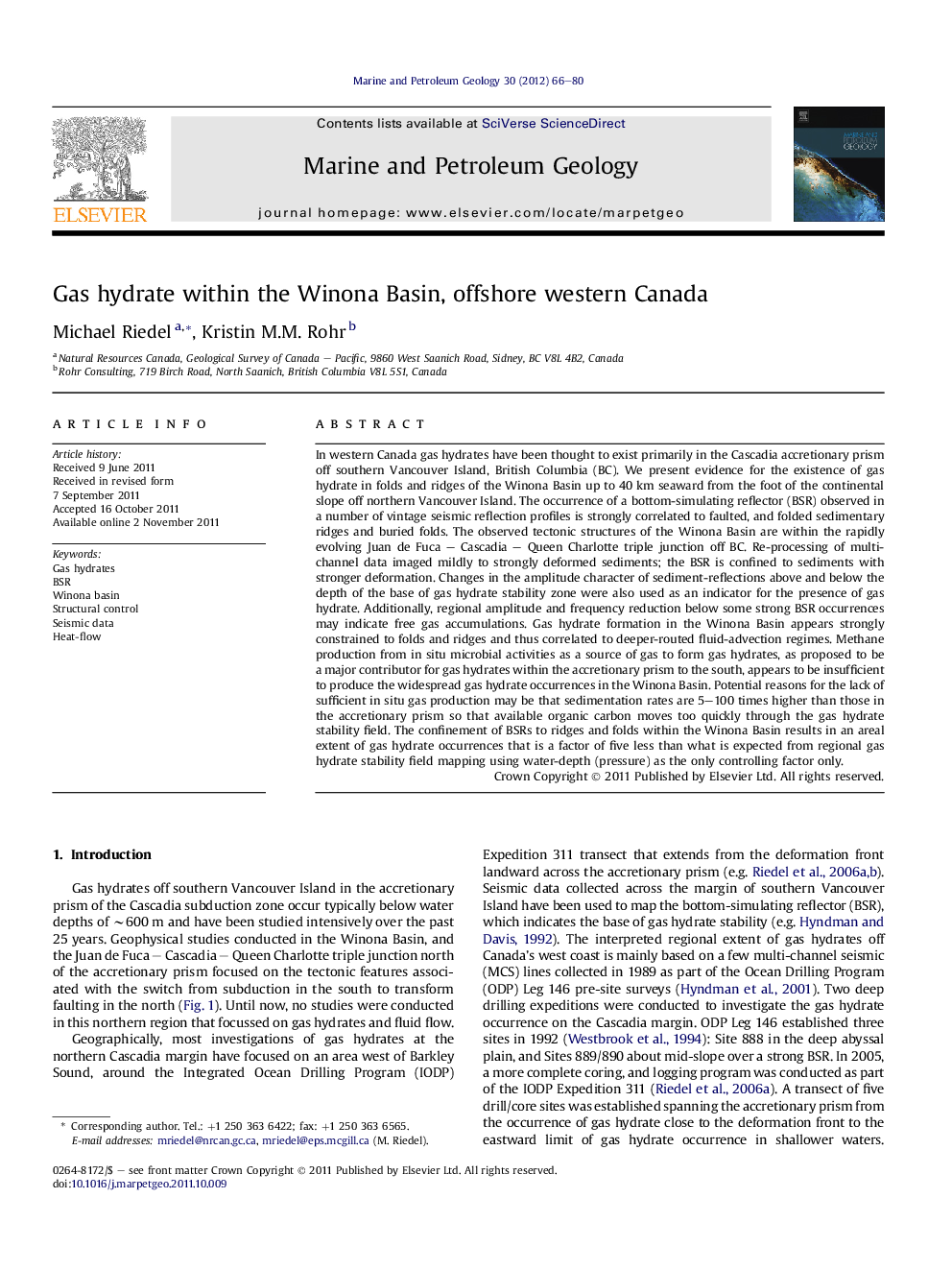| کد مقاله | کد نشریه | سال انتشار | مقاله انگلیسی | نسخه تمام متن |
|---|---|---|---|---|
| 4696035 | 1637185 | 2012 | 15 صفحه PDF | دانلود رایگان |

In western Canada gas hydrates have been thought to exist primarily in the Cascadia accretionary prism off southern Vancouver Island, British Columbia (BC). We present evidence for the existence of gas hydrate in folds and ridges of the Winona Basin up to 40 km seaward from the foot of the continental slope off northern Vancouver Island. The occurrence of a bottom-simulating reflector (BSR) observed in a number of vintage seismic reflection profiles is strongly correlated to faulted, and folded sedimentary ridges and buried folds. The observed tectonic structures of the Winona Basin are within the rapidly evolving Juan de Fuca – Cascadia – Queen Charlotte triple junction off BC. Re-processing of multi-channel data imaged mildly to strongly deformed sediments; the BSR is confined to sediments with stronger deformation. Changes in the amplitude character of sediment-reflections above and below the depth of the base of gas hydrate stability zone were also used as an indicator for the presence of gas hydrate. Additionally, regional amplitude and frequency reduction below some strong BSR occurrences may indicate free gas accumulations. Gas hydrate formation in the Winona Basin appears strongly constrained to folds and ridges and thus correlated to deeper-routed fluid-advection regimes. Methane production from in situ microbial activities as a source of gas to form gas hydrates, as proposed to be a major contributor for gas hydrates within the accretionary prism to the south, appears to be insufficient to produce the widespread gas hydrate occurrences in the Winona Basin. Potential reasons for the lack of sufficient in situ gas production may be that sedimentation rates are 5–100 times higher than those in the accretionary prism so that available organic carbon moves too quickly through the gas hydrate stability field. The confinement of BSRs to ridges and folds within the Winona Basin results in an areal extent of gas hydrate occurrences that is a factor of five less than what is expected from regional gas hydrate stability field mapping using water-depth (pressure) as the only controlling factor only.
► First evidence for gas hydrate in Winona Basin, a transpressive tectonic regime on Cascadia margin.
► BSRs constrained to sediment-folds and ridges in the basin.
► Gas hydrate formation by advection of deep fluids in Winona Basin.
► Possible thermogenic gas methane production.
Journal: Marine and Petroleum Geology - Volume 30, Issue 1, February 2012, Pages 66–80